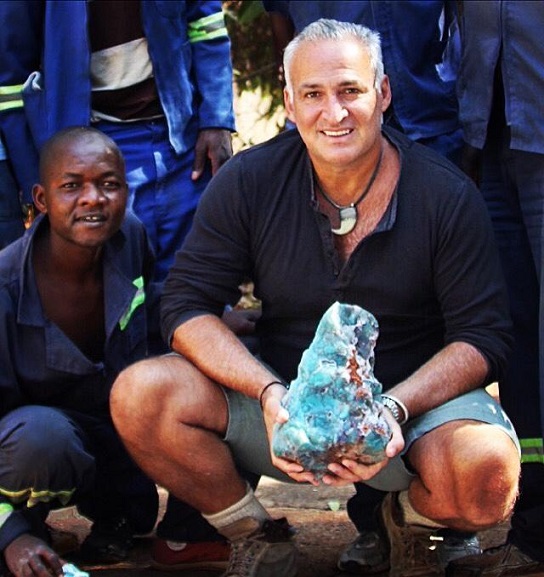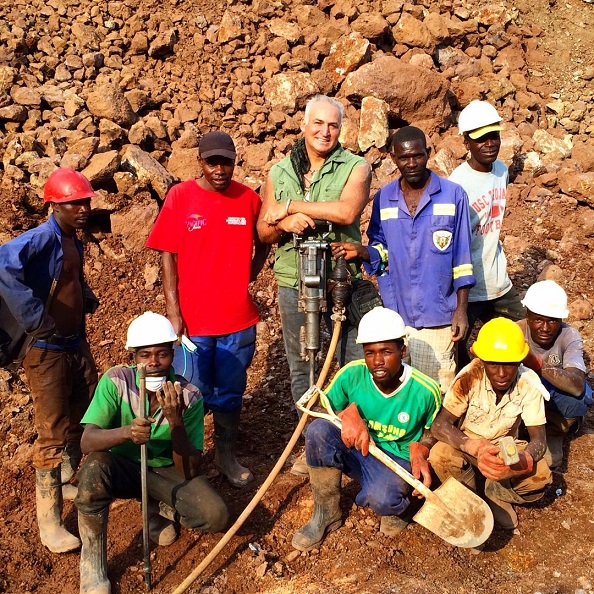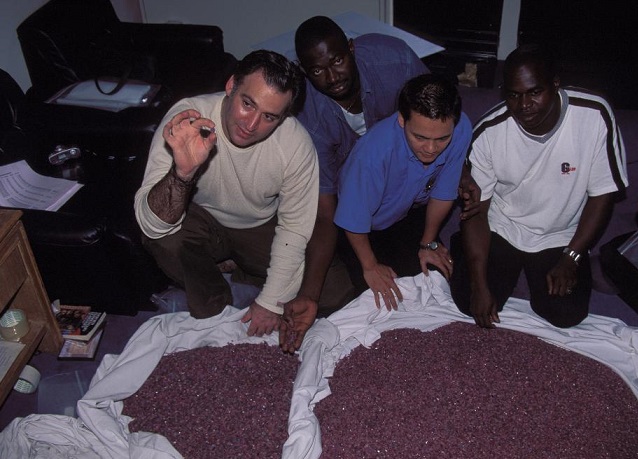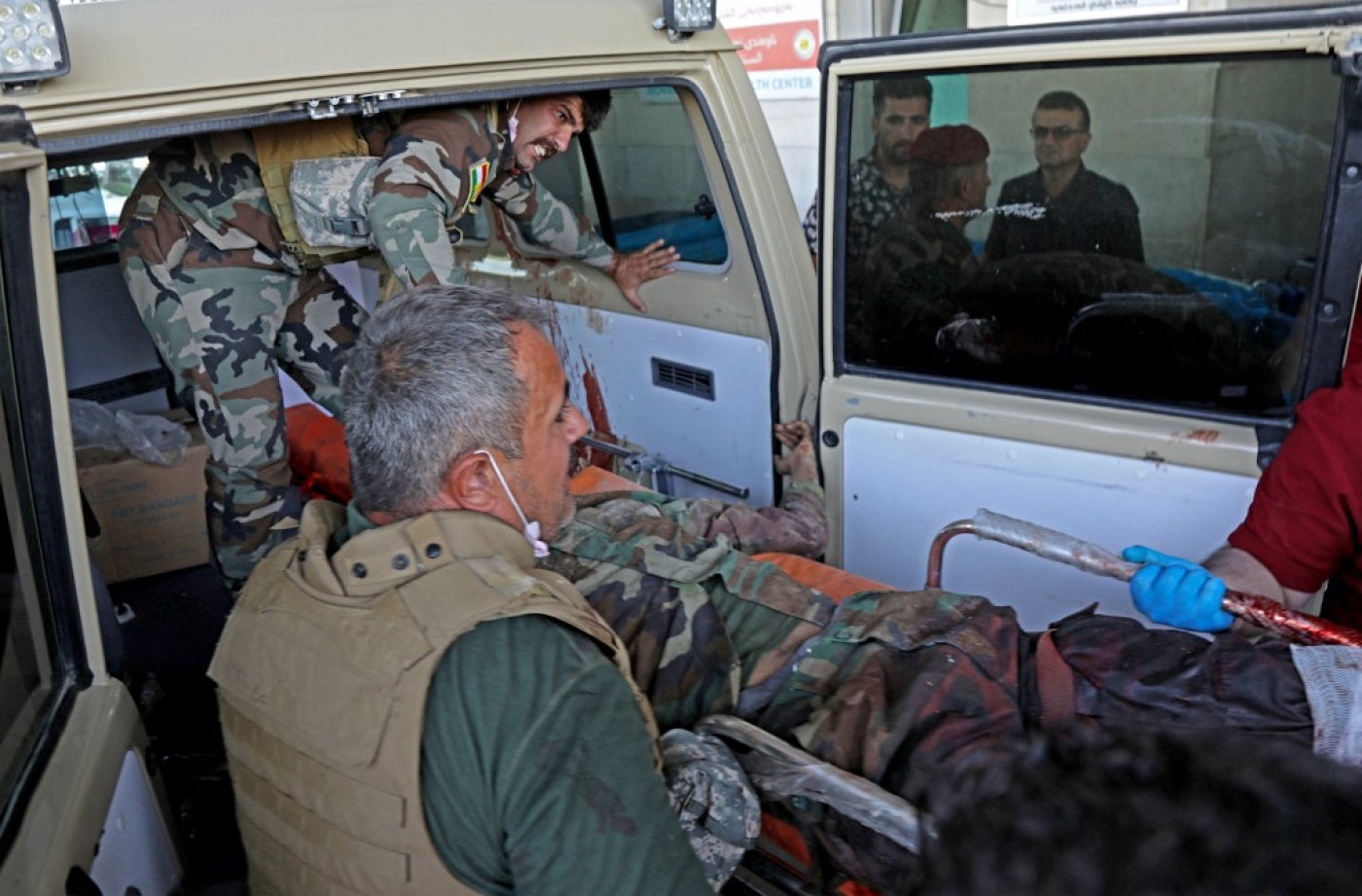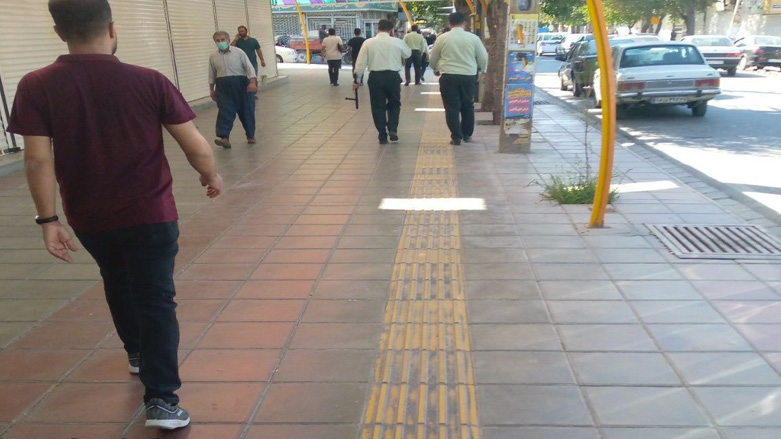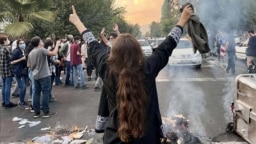GEMOLOGY ACTIVISM Yianni Melas, the Greek Modern-Day Indiana Jones of Gems
ByPaula Tsoni
October 1, 2022
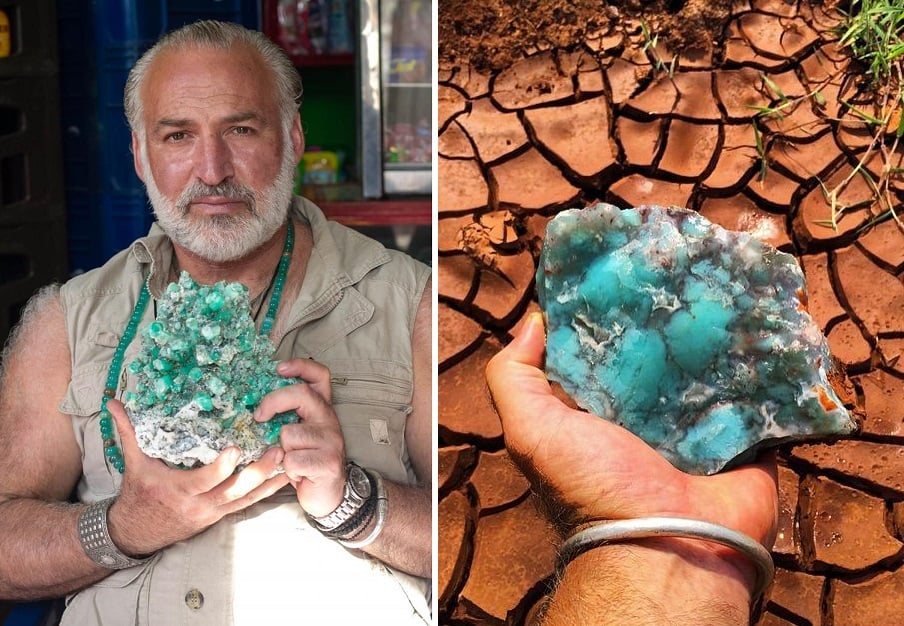
Yianni Melas discovered the aquaprase, the first new gem of the 21st century.
Credit: Courtesy of Yianni Melas
World-acclaimed gems guru and human rights activist Yianni Melas has been budded the modern-day Indiana Jones of gems, a nickname first attributed to him by the French Vogue in 2016 shortly after his discovery of a never-seen-before brand new gemstone.
Nonetheless, the high-achieving gemologist and gem explorer poses a sole condition for aspiring interviewers—to feature him as a Greek before anything else.
As a top-class rough gem trader and gemstone adviser to major international jewelry brands, but also as an ethical mining advocate, anti-kleptocracy activist, teacher, speaker, and TV personality, Yianni Melas has been roaming the Earth for over three decades, making fascinating discoveries, bonding with communities, and positively impacting the lives of people every step of the way.
“I have to say that my life has been really incredibly fun and interesting,” Melas tells Greek Reporter in an interview as he celebrates his sixtieth birthday.
Greek Indiana Jones’ new gem discovery
It was in 2016 that Yianni Melas made international headlines for the discovery of “the first new gem of the 21st century.” The aquaprase, as it is named, was discovered by Melas three years earlier at an undisclosed location in Africa.
On a planet that has consistently been dug up for centuries, the chances of such a find are almost impossible.
“If you spend 35 years in the jungle and that much amount of time immersed in exploring, sometimes God throws something to you,” Melas said. “In this particular case, he threw to me the most incredible gift because for the rest of history that gemstone will be associated with me; a Greek gemologist,” Melas points out.
Yianni Melas discovered the aquaprase at an undisclosed location in Africa.
Photo Credit: Courtesy of Yianni Melas
Although at first, experts opined that the blue-green gem that he had presented them with was simply a new variation of the chrysoprase, a gem known since the times of Alexander the Great, Melas insisted that it couldn’t be.
The name “chrysoprase” in itself -an ancient Greek amalgamation of the colors gold (chryso) and green (prasino)- would dismiss such a claim.
Eventually, extended scientific tests at the Gemological Institute of America (GIA), where Melas had worked as a teacher, confirmed that the stone’s chemical composition was indeed entirely never-before-seen, and so the aquaprase was officially recognized and trademarked as a new gem.
“To discover a new gemstone is not something that happens so easily. It truly is a remarkable feat. I have unearthed all kinds of gemstones that are new discoveries, but these were part of known gemstones, eg. a new ruby deposit, and a new emerald deposit. But aquaprase is, gemologically, a brand new gem”, Melas details.
Empowered by Greek heritage
When a 12-year-old Yianni Melas was leaving his home island, Rhodes, to continue his education in the USA in 1974, he gave his severely ill grandfather one promise as they said goodbye at the airport. That was to make the surname Melas known across the world.
Little could the young boy or his deteriorating grandfather, imagine, at that time, the great extent to which this ambitious promise would materialize over the next few decades.
“My pappou was my greatest teacher and what I loved about him was that he worked so hard for his family”, Melas says of his grandfather today.
“That promise was a lot of motivation; the forces that drive you are not necessarily sometimes your own. They sometimes are the foundation upon which others have given and which you feel that you owe something to, to make sure that those people are recognized”.
Having quit his studies in medicine to pursue gemology, Melas volunteered to catalog the John Sinkankas library of ancient, antique and contemporary books, acquired by the GIA in the 1980s. He spent a year reading about the journeys of legendary treasure hunters and explorers, from Marco Polo to Tavernier.
“In these books, there were treasure maps and pictures of all their travels and drawings. That was the moment that created the excitement for me to travel”, he recalls.
The opportunity appeared when the young Greek gemology teacher met Helmut Swarovski and persuaded him to introduce natural stones to his brand; gemstones that Melas would discover and buy on Swarovski’s behalf.
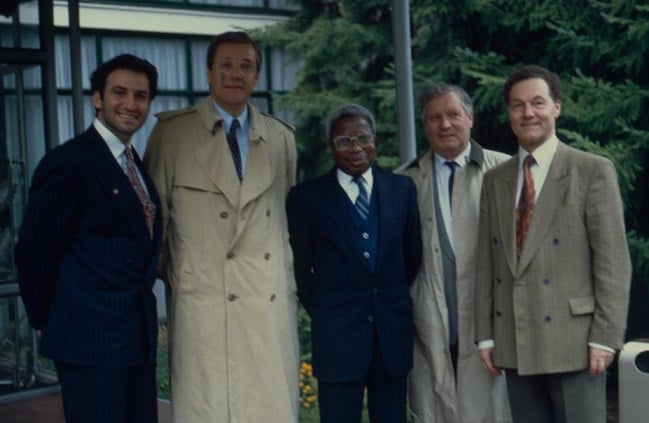
Yianni Melas (left) with Helmut Swarovski in the 1990s.
Photo Credit: Courtesy of Yianni Melas
Upon his arrival to Africa, established Greek miners like the Pappas brothers, took the inexperienced GIA instructor under their wings and taught him the secrets of gemstone hunting in the wild.
Melas’s leap into activism
Starting off as a rough gem trader in Kenya, then Tanzania, Madagascar, Zambia, through his work Melas began to see the positive effects that the gem trade could have in developing nations, which lead to his involvement in human rights activism and beneficiation.
He places heavy emphasis on giving back to the communities where gems are discovered, with priority to gem and jewelry education so that the indigenous community fully benefits from these “gifts of God”, as he calls gemstones.
Growing into a devoted advocate of ethical mining and self-empowerment of artisanal miners in the communities that he worked in, Melas sensed that one reason for his sensitivity to human rights struggles was his growing up listening to stories about his mother’s harsh childhood in WWII Greece.
Yianni Melas with artisanal miners in Africa.
Photo Credit: Courtesy of Yianni Melas
“A lot of people would like to say that you see so much unhappiness and so much misery and everything else and you become an activist. No. That was a part of it. I think the main reason was my mother.
“When I heard her stories about being a 5-year-old growing up under those terrible WWII circumstances, it made me realize that, although Greece today is not going through that, a lot of the kids at war throughout the world, in this particular case now Ukraine, were still going through some very hard times.
“I felt that no child should have to go through what my mother went through. And so whenever I was fighting for human rights, I was actually fighting for something not to repeat itself”, he confesses.
Melas’s activism started in junta-run Burma in the 1990s: “This was an incredible place to understand just how corruption in the military and in politics could really change the way that the people lived; a hardcore lesson in how natural resources could only benefit the rich and powerful.
“The only people that were benefiting from the natural resources of Burma were those connected to the military, while the average citizens were really struggling to feed their families”, he explains.
During his years in the country, Melas would secretly participate in dangerous pro-democracy propaganda. Had he been caught, he would have faced execution.
“Looking back, I think about those things that I did and I realize I had an angel on top of me”, he admits.
A hunger strike that brought down an empire
In the years that followed, Melas continued his activism in countries like Botswana and Zimbabwe.
One of his hardest fights was fought for Angola, where he became instrumental in the exposure of political corruption which eventually led to the bankruptcy of Swiss luxury jeweler De Grisogono. It was owned by Isabel Dos Santos, the daughter of Angola’s president, who was also the richest woman in Africa.
“By coincidence, I found out that Angola had an incredible wealth of diamonds and of oil, and yet it had the highest mortality rate for children under five. 256 out of 1000 children were dying before reaching the age of 5″, he recalls.
Yianni Melas sorting gems with artisanal miners in Bangkok.
Photo Credit: Courtesy of Yianni Melas
Around that same time, Melas’s own daughter became ill with a horrible cough that the doctors could not diagnose.
“At night, Electra would turn blue, as she couldn’t even breathe, and every night I wouldn’t sleep, for months. At one stage I almost had a nervous breakdown because I didn’t know what to do, and so I made a tama to the Madonna, promising that, if my daughter was cured, I would do my best, in my whole life, to help children survive life-threatening diseases”.
When a Greek doctor diagnosed the child with pertussis, an eradicated disease that Melas had apparently brought with him from Africa, it became clear to him that he had to keep his tama; his contract with God.
“I kept thinking how there were fathers and mothers just like me, in Africa, who couldn’t save their kids. So I had to do something to boycott this kleptocracy that kept the people of Angola in poverty”, he says.
In November 2017, Melas started a 31-day hunger strike in Geneva, in protest of the Christies’ auction of a 163-carat Angolan diamond sold by De Grisogono. He then continued the last three weeks of his hunger strike in Athens, where he used to walk 5 km daily from his rented flat in the district of Koukaki up to the Acropolis and back, for motivation.
“I remember every step I took, the pain was unimaginable. But I said to myself, if I can save even one kid from this, I will do it” – and he did.
On day 28 of the hunger strike, the new President of Angola publicly recognized the corruption involved with De Grisogono. Three years later, the Financial Times exposed the full story and the brand went bankrupt.

Yianni Melas places heavy emphasis on giving back to the communities where gems are discovered, with priority to gem and jewelry education.
Photo Credit: Courtesy of Yianni Melas
Planning ahead
Besides his gem-hunting and human rights activism, Melas has been designing jewelry in his personal time for over 30 years, feeding his dream to someday launch his own jewelry brand.
“There is a reason why I didn’t release my brand then, and that’s because when you are doing activism and at the same time you are selling something, it’s very difficult to prove why you are doing this”, he expounds.
“A lot of people do activism to make themselves look glorious so that they could sell whatever they are making, and I didn’t want to do that.
“Everybody is on sustainability and beneficiation these days and everyone is trying to prove how ethical they are, and I realize that, if I could give the bad guys one reason that they could associate my activism as a way to promote something, then that would basically dilute the message of ethics and truth which I wanted to talk about”, he adds.
However, as he turned 60 in May, Melas reminds himself that all warriors have to one day ride into the sunset.
“Being involved in human rights really sucks all your energy out of you. It’s not the way people perceive it. You are constantly giving and there’s very little that you get out of it, other than for yourself and the legacy you leave behind for your family, for your children. I am so tired from all these wars; there are far more than you imagine”, he notes.
“So I promised myself that, at 60, I would stop being that person trying to save the world and I would finally do what I wanted to do without people questioning me in a way, what my motivation was.
“And I think now, what I’d like is that nobody can say that I lived this luxurious life of robbing the poor or whatever, everything that’s associated with blood diamonds and all these things, and nobody can say that because I’ve been actually on the opposite side, supporting human rights”.

A young Yianni Melas in the jungle in Vietnam.
Photo Credit: Courtesy of Yianni Melas
Greek Indiana Jones’s new creative journey
Past his milestone 60th birthday, Melas envisions himself on a small Greek island, like Symi or Rhodes, by a taverna, having his meze, playing tavli, and enjoying life.
“I will still be involved in human rights, but because this time I will be in the gem trade and jewelry market as a brand, I will focus on less confrontational and dangerous activism and instead focus on bringing gem cutting and jewelry education to the mining communities”, he states.
On the other hand, Melas can’t rule out embarking on new international adventures.
“Exploring has become part of who I am, my DNA. And thanks to the way that the world works with the internet today, you could be in the middle of the jungle and you could be designing and searching for gemstones that you are going to actually put into the jewelry that you want”, he concludes.
In the meantime, Melas will continue to be an ambassador to the Greek culture and the values of democracy, as he firmly believes that, as Greeks, we must represent ourselves as honorable as we can.
At the time of publication, he was defending the rights of Iranian women and preparing to make a public statement from the Acropolis of Rhodes to support the 150 protests taking place across the globe on October 1st, 2022, in solidarity of the Iranian people.


